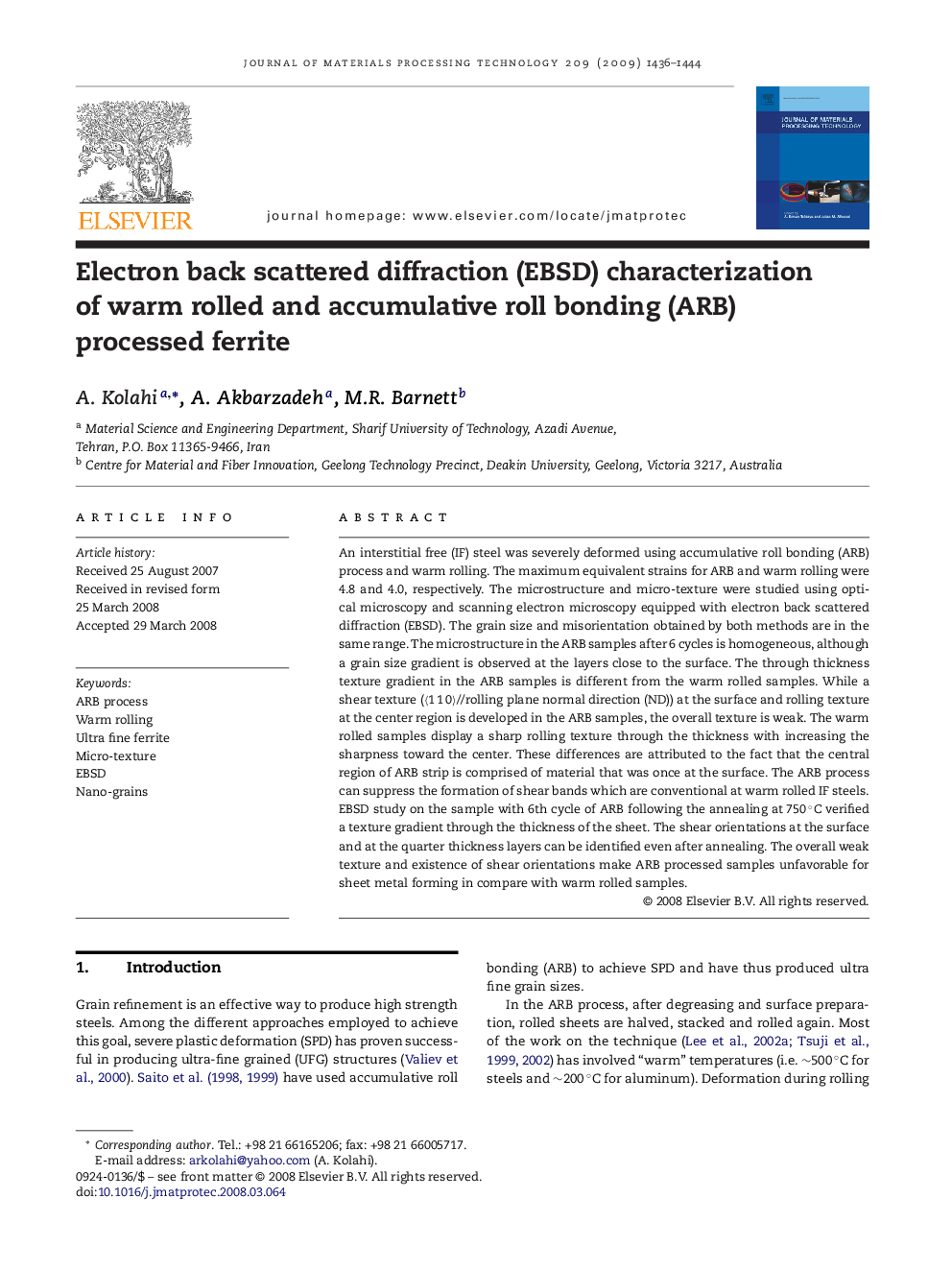| Article ID | Journal | Published Year | Pages | File Type |
|---|---|---|---|---|
| 791522 | Journal of Materials Processing Technology | 2009 | 9 Pages |
An interstitial free (IF) steel was severely deformed using accumulative roll bonding (ARB) process and warm rolling. The maximum equivalent strains for ARB and warm rolling were 4.8 and 4.0, respectively. The microstructure and micro-texture were studied using optical microscopy and scanning electron microscopy equipped with electron back scattered diffraction (EBSD). The grain size and misorientation obtained by both methods are in the same range. The microstructure in the ARB samples after 6 cycles is homogeneous, although a grain size gradient is observed at the layers close to the surface. The through thickness texture gradient in the ARB samples is different from the warm rolled samples. While a shear texture (〈1 1 0〉//rolling plane normal direction (ND)) at the surface and rolling texture at the center region is developed in the ARB samples, the overall texture is weak. The warm rolled samples display a sharp rolling texture through the thickness with increasing the sharpness toward the center. These differences are attributed to the fact that the central region of ARB strip is comprised of material that was once at the surface. The ARB process can suppress the formation of shear bands which are conventional at warm rolled IF steels. EBSD study on the sample with 6th cycle of ARB following the annealing at 750 °C verified a texture gradient through the thickness of the sheet. The shear orientations at the surface and at the quarter thickness layers can be identified even after annealing. The overall weak texture and existence of shear orientations make ARB processed samples unfavorable for sheet metal forming in compare with warm rolled samples.
